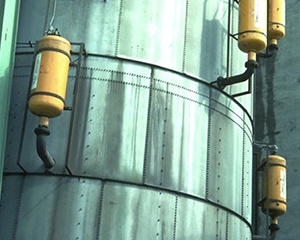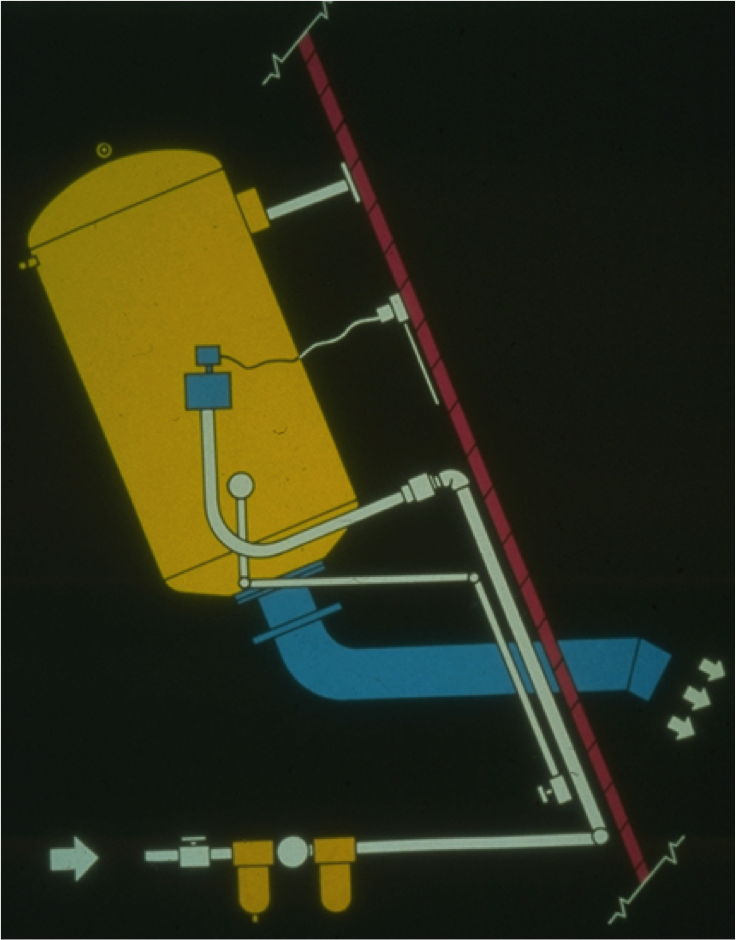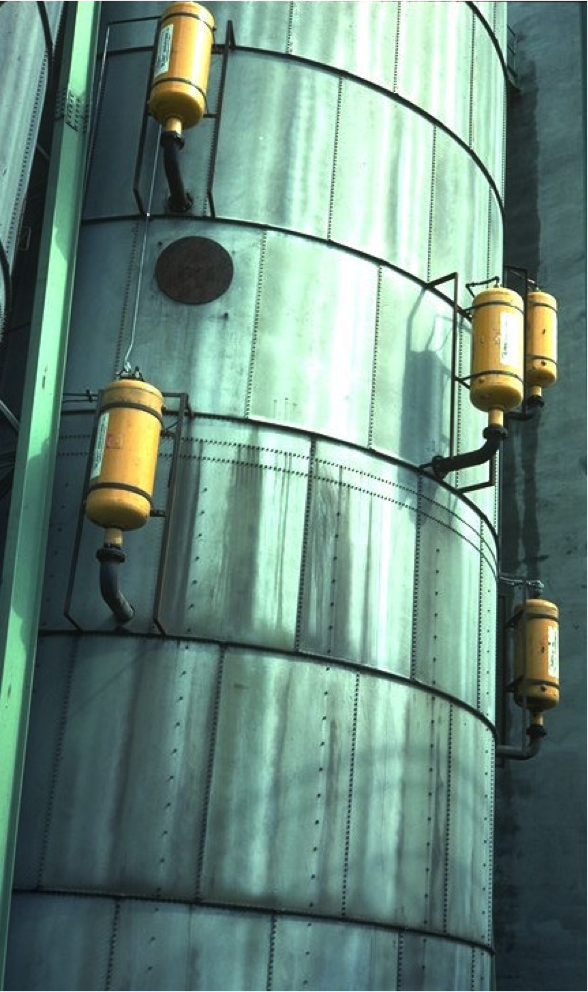
In my last post, I presented you with some basic information on mechanical flow aids along with recommendations on when and where they should be used. As the third entry in my series, this post will discuss the capabilities and limitations of pneumatic flow aids, which are probably more often misused than either mechanical or chemical aids.
 Air cannons work by quickly releasing a volume of high-pressure air or other gas into the silo. This action creates a shock wave, which applies stress on an arch to break it. The size, number, and location of the air cannons required depend on the cohesive strength of the material and the dimensions of the silo. In most applications more than one air cannon is required, and in some applications air cannons must be installed at two or more levels in the. Air cannons can be effective in breaking arches that form after material has been stored at rest. However, material which cakes or increases dramatically in strength is difficult to dislodge with air cannons.
Air cannons work by quickly releasing a volume of high-pressure air or other gas into the silo. This action creates a shock wave, which applies stress on an arch to break it. The size, number, and location of the air cannons required depend on the cohesive strength of the material and the dimensions of the silo. In most applications more than one air cannon is required, and in some applications air cannons must be installed at two or more levels in the. Air cannons can be effective in breaking arches that form after material has been stored at rest. However, material which cakes or increases dramatically in strength is difficult to dislodge with air cannons.
 Air pads, air nozzles, and air-assisted dischargers are devices intended to inject low-pressure air into a silo. These devices are not effective for correcting problems caused by arching or ratholing but, if used correctly, they can be helpful in correcting flow problems with fine powders.
Air pads, air nozzles, and air-assisted dischargers are devices intended to inject low-pressure air into a silo. These devices are not effective for correcting problems caused by arching or ratholing but, if used correctly, they can be helpful in correcting flow problems with fine powders.
When used correctly, pneumatic flow aids can be effective in stimulating material flow. However, there are some cases where it is necessary to redesign or replace the existing equipment. Determining when flow aids are not enough can be difficult. We have visited some client sites where dozens of air cannons have been installed on a single in bin! This is obviously not an economical or efficient way to achieve reliable flow.
When deciding whether to use a flow aid with your material, remember that they should be used as an aid and not as a permanent solution to problems that are inherent in your handling process.




